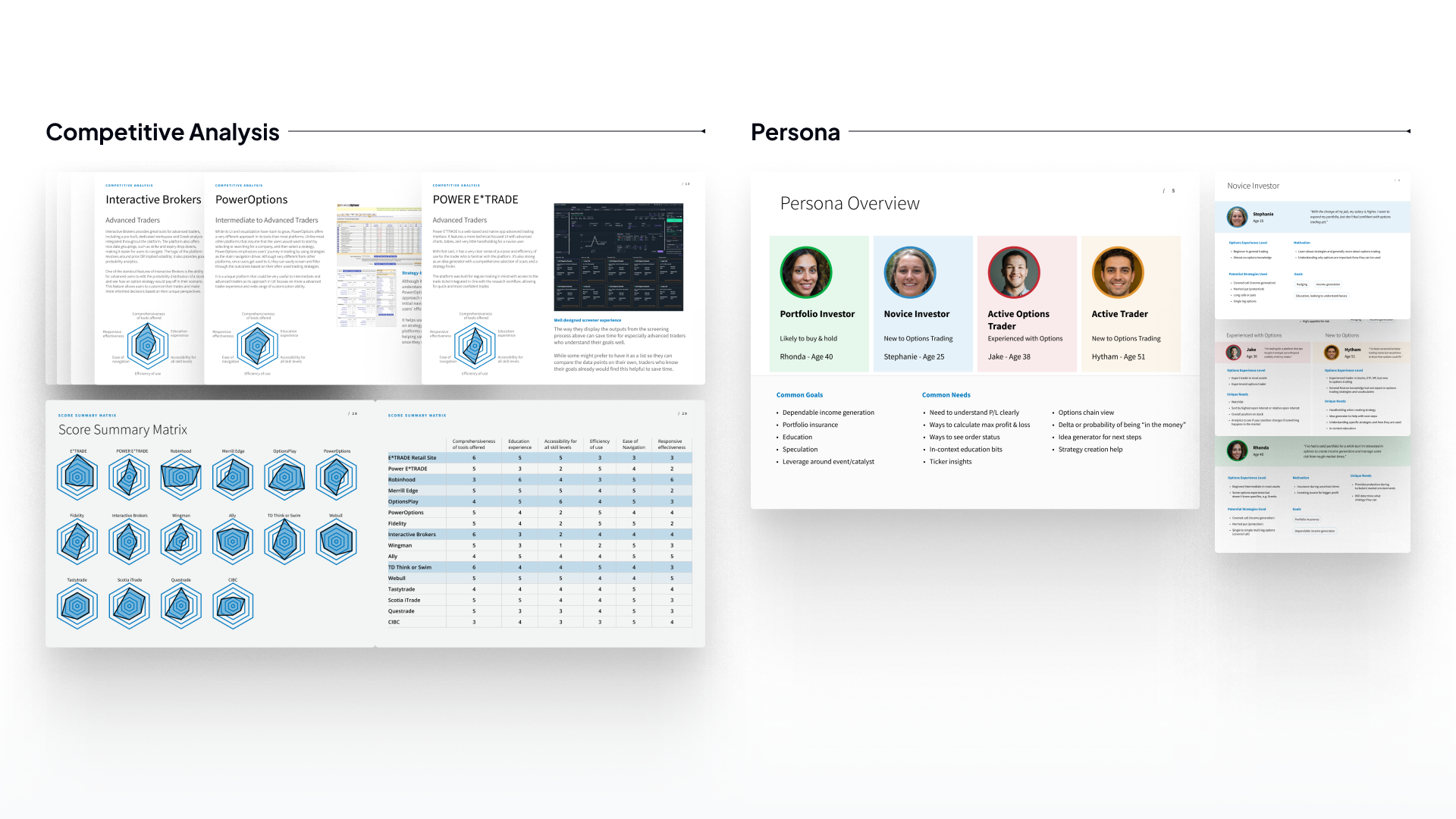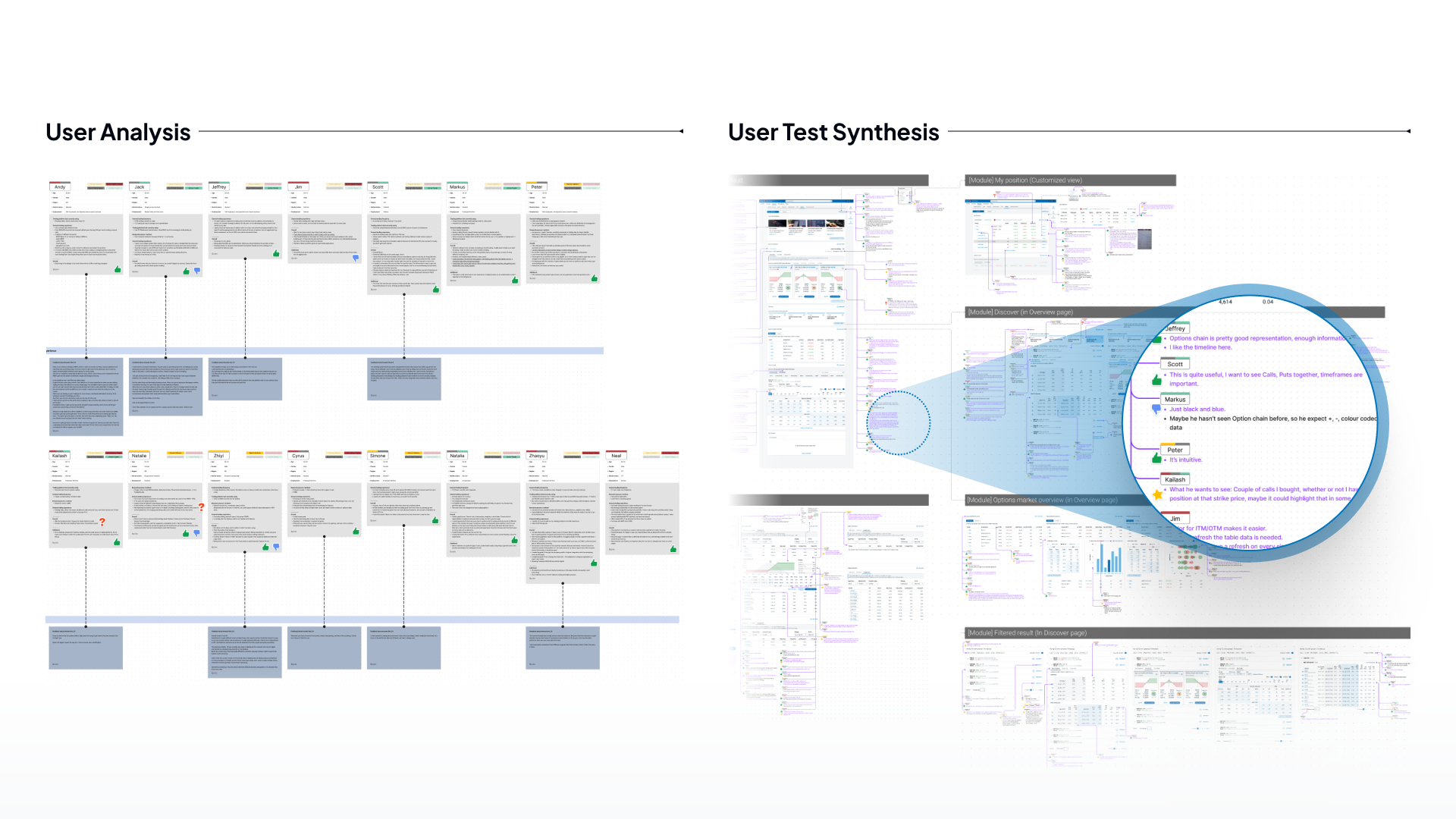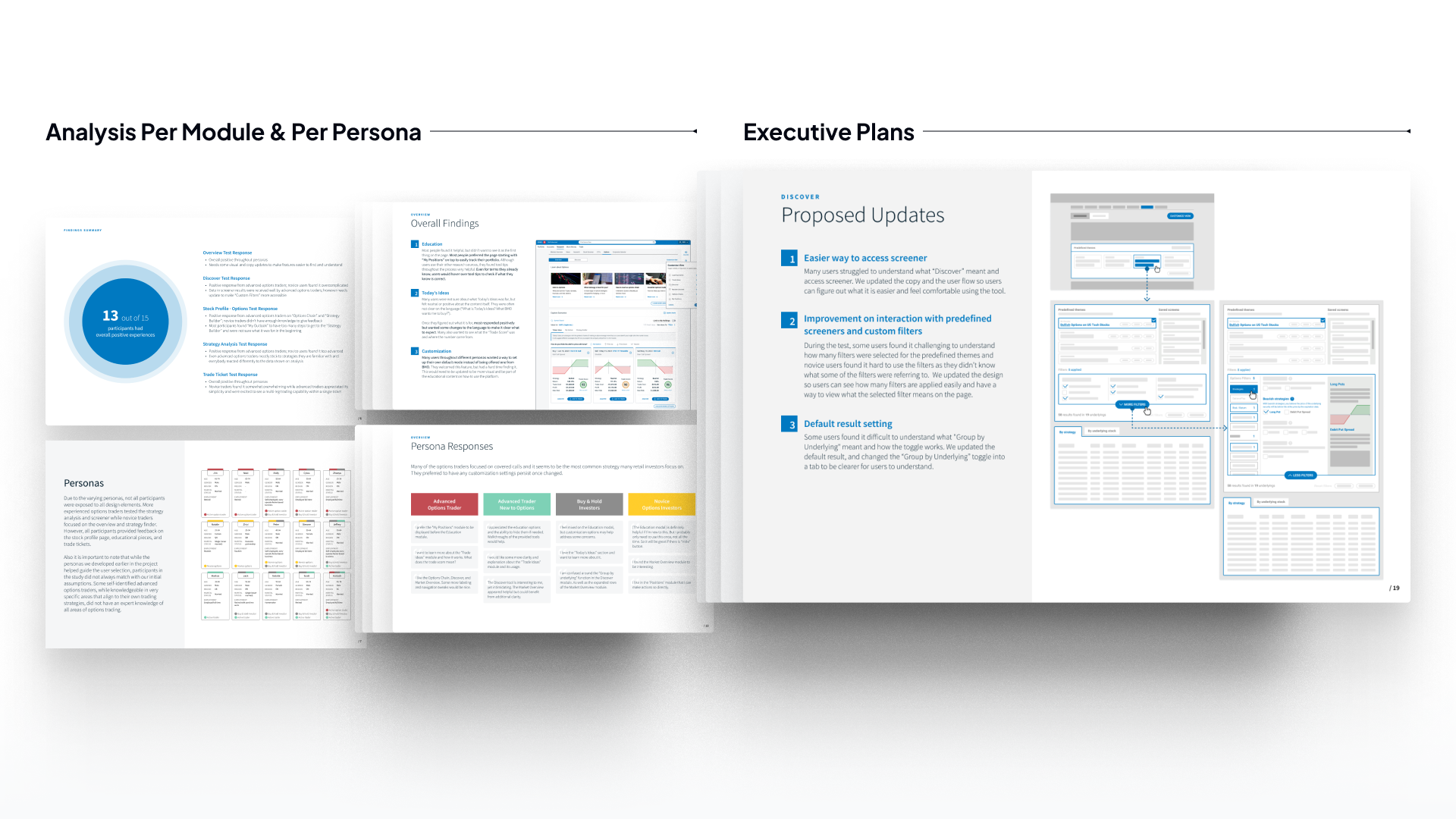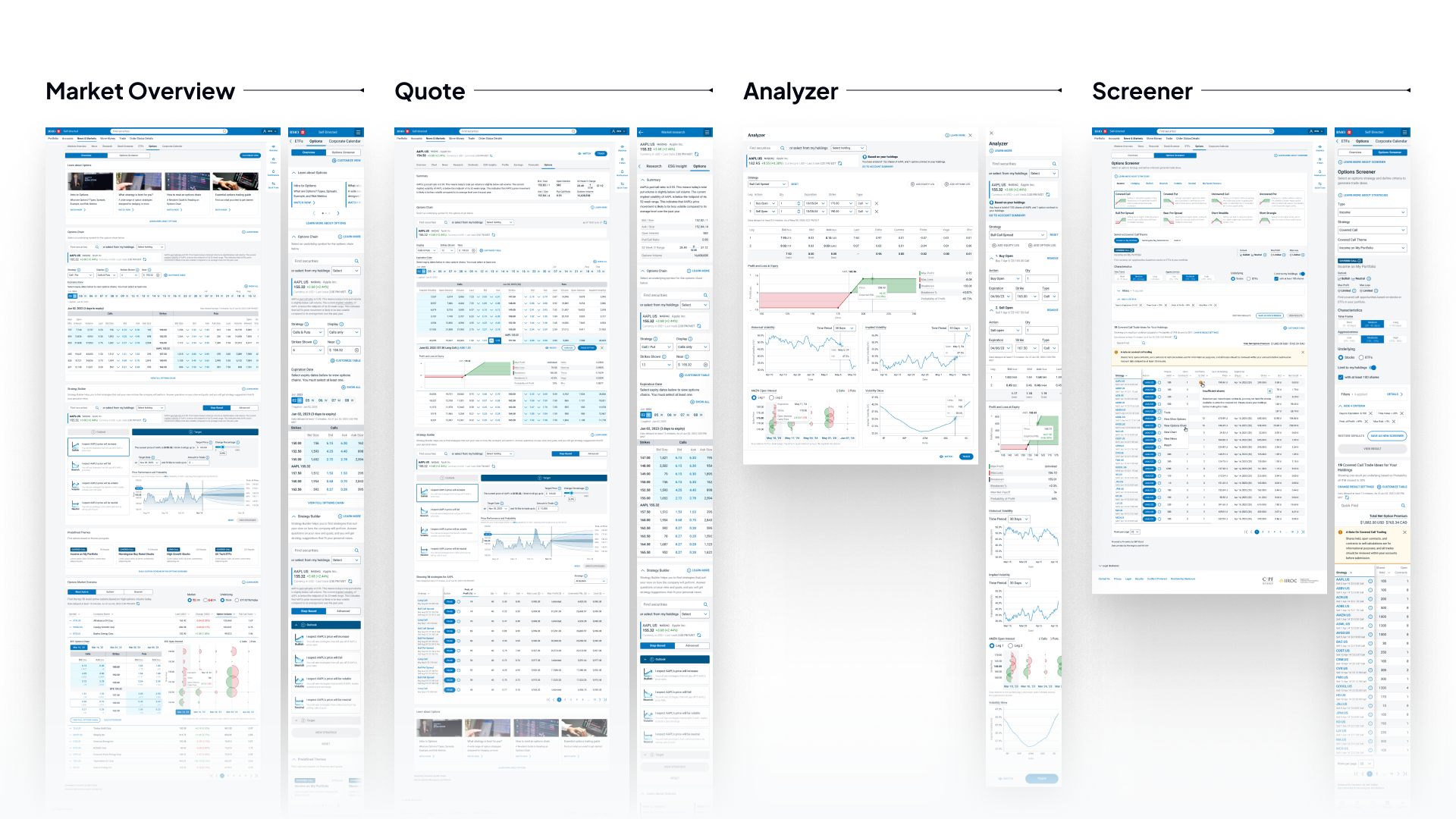Options Research
Experience


The BMO Options Experience project aims to identify best market practices for Options research and trading, and based on these findings, explore and establish a coherent, user-friendly, and innovative modern Options trading experience for BMO retail investors.
Boosting traffic, engagement, and trading activity with smarter UX.
Innovation in every feature, impact in every decision—our design turns options complexity into performance.
Rooted in user research and refined through iteration, a design journey built to support real trading workflows for both novice and advanced users.
Discover
Understanding users and competitors through research and persona definition.

User Test
Conducting interviews and usability tests to uncover key insights.

Define
Mapping insights into actionable plans per module and user type.

Design
Translating insights into intuitive interfaces through iterative design.

Every challenge was an opportunity to scale — here's how I approached it.
Options trading is one of the most complex areas in finance — filled with terminology, calculations, and strategy logic that’s hard to intuitively grasp for both designers and users. Designing tools for this domain required deep subject understanding and financial literacy.
Options traders range from conservative income seekers to advanced strategists — making it difficult to streamline a one-size-fits-all experience without firsthand insight into how real users behave on the platform.
The client had high accessibility standards, both in terms of compliance (WCAG) and in-house criteria. Meeting them required more than just visual tweaks — it involved structural design decisions and dev-side alignment.
There’s no shortcut to building clarity in a complex space. I immersed myself in options fundamentals through expert sessions, internal tutorials, and research materials — enabling me to make informed design decisions grounded in domain logic.
We conducted user testing with existing platform users to uncover specific goals, frustrations, and patterns. Based on those insights, we refined the flow iteratively — balancing flexibility and guidance across user types.
We collaborated directly with the client’s accessibility specialist through multiple review rounds. Each iteration focused on clarity, keyboard navigation, screen reader support, and interaction patterns — ensuring both functional and visual accessibility were fully addressed.
Options trading is one of the most complex areas in finance — filled with terminology, calculations, and strategy logic that’s hard to intuitively grasp for both designers and users. Designing tools for this domain required deep subject understanding and financial literacy.
There’s no shortcut to building clarity in a complex space. I immersed myself in options fundamentals through expert sessions, internal tutorials, and research materials — enabling me to make informed design decisions grounded in domain logic.
Options traders range from conservative income seekers to advanced strategists — making it difficult to streamline a one-size-fits-all experience without firsthand insight into how real users behave on the platform.
We conducted user testing with existing platform users to uncover specific goals, frustrations, and patterns. Based on those insights, we refined the flow iteratively — balancing flexibility and guidance across user types.
The client had high accessibility standards, both in terms of compliance (WCAG) and in-house criteria. Meeting them required more than just visual tweaks — it involved structural design decisions and dev-side alignment.
We collaborated directly with the client’s accessibility specialist through multiple review rounds. Each iteration focused on clarity, keyboard navigation, screen reader support, and interaction patterns — ensuring both functional and visual accessibility were fully addressed.